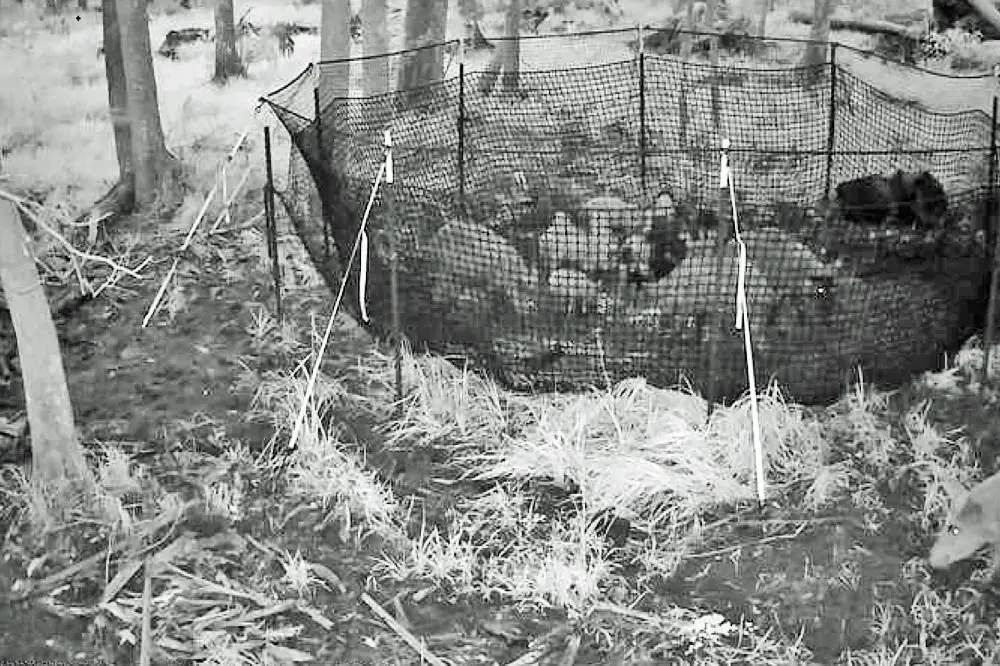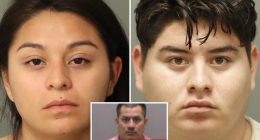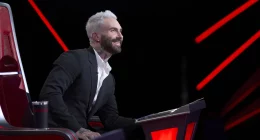
As feral hogs continue to trample all over private property in what residents say are increasing numbers spurred by development and a diminishing habitat, the Flagler County Commission is proposing to increase traps, encourage more volunteer to join a corps of hog-hunters, repair fencing along county roads, and work with homeowner associations on their own hog-management plans.
But if Commissioner Greg Hansen thinks the problem is “solvable,” Commissioner Leann Pennington is more skeptical. The county can enact that list of initiatives, but “to be quite honest, to be realistic, we’ll do our part but I’m not sure it’s goin to solve the problem overall.”
“There’s a few entities that need to come together on it,” Commission Chairman Andy Dance said: Palm Coast, the county, the Florida Inland Navigation District, and other agencies.
But to what pragmatic ends? In many ways, the hog problem is as perplexing as it is spread out.
“This quality of life has been severely dampened by the chronic anxiety, fear, anger and exasperation felt by our residents, your residents,” Nancy Crouch, a resident of Grand Haven and a supervisor of that community development district, told the commission. (Crouch is best known in Flagler for her leadership roles in the arts.) “The hundreds of thousands of dollars of property damage to Grand Haven residents from feral hogs over recent years has worsened and will continue to unless we find a solution. I do like to believe that we are the superior species here, however.”
Crouch noted that development in various sectors, such as Colbert Lane and Old Kings Road–both of which have seen rapid development–has aggravated the situation, sending hogs seeking food through Hidden Lakes and Grand Haven. “Grand Haven has seen an enormous increase in feral hog damage to residential properties since the major developments along Colbert Lane and Roberts Road,” she said. She showed pictures from Grand Haven that, she said, looked more like “someone tilling a far.” (If one word can sum up what hods do to a landscape, it’s trampling.)
Then there are unnerving encounters between residents out for a walk, or walking their dog, and the sudden appearance of a hog, making it ultimately “a safety issue,” in Commissioner Dave Sullivan’s view.
“I also think about this situation from a public health responsibility standpoint,” Commissioner Donald O’Brien said. “That is something that is that’s one of our charges, something that we have to think about.” He said relying on the state will not help, “because the state does everything they can to force things down at the local level and not fund it, and get us to fund it.”
“I have coyotes in my backyard right now,” Pennington said. “I called Florida Wildlife and they sent me a brochure on how to live with the urban Coyote. That was their response to me.”
Residents, Crouch said, are helpless. She suggested the county could hire a hog manager, add more traps, repair some of the dilapidated fencing along certain arterial roads in the county, at least to confine the hogs in places like Graham Swamp, and require developers “to be part of the solution instead of the problem.” She urged a collaboration with state and national agencies to manage the hogs’ damage.
A dozen other people, some from Hidden Lakes, most from Grand Haven, shared their own concerns or, in some cases, horror stories about hogs. It was that kind of mounting complaints that spurred county government to schedule Monday’s workshop on hogs.
The workshop was designed to provide an overview of hogs’ history in the state, their (negative) economic impact, their numbers and answer questions: What is Flagler County doing about hogs on county lands? What is it doing on private lands and what can residents do?
Governments may not use their hog-management resources on private lands. Local government can only provide advice and put residents’ eyes to work, spotting hogs, using the photographs they submit to the county’s database, “because sometimes an early detection is really the best way to respond,” Mike Lagassi, the county’s assistant director of general services, said. “We can’t always do something, but sometimes we can.” (Residents can report hog sightings at the county’s Feral Hog Reporting page.)
Hogs, which forage over miles, have been around in Florida for half a millennium. There are probably half a million of them in the state today, 9 million in 35 states mostly concentrated in the South and California. There’s no known figure for Flagler County. Hogs in a single year are estimated to cause $6 million in crop losses. “In Florida for each producer the loss for hog damage is anywhere from $400 to $4,000,” Lagasse said. “It probably depends on the size and land and where you’re located. But if you think about that for each producer each year, that’s a reasonable expense.”
The county for years has had “management agents” hunting and trapping hogs. They have been trapping and killing hogs at a rate of 100 to 150 per year, though with county efforts, 424 hogs have been trapped and removed from county lands just since last September, including 245 from Graham Swamp and 133 from Princess Place Preserve.
Ronnie Mitchel, a land management specialist with the county, described a new net-style trapping system that has been particularly successful. The county is using two such traps at the moment, one at Graham Swamp, one at Princess Place, each costing about $2,500. The traps are wide enough that deer will not get trapped. The county works with volunteers to set the traps. It also takes about $75 worth of corn a month to bait the hogs. The county could have more traps, but “the limiting factor is staff time,” Lagasse said–among other factors.
The hogs are either moved from the property (only licensed agents may move hogs) or they are killed on site. After they are killed, they are either buried at a certain depth, to prevent scavenging, or removed. On private property, hogs may be shot at will with permission from a landowner. Some hunters deliver the hogs to people who like to cook them, Lagassi said, but they are never donated to food banks.
“Being a feral hog hunter allows people to kind of be outside and enjoy themselves,” Lagasse says. “But when it’s really hot, we still have to do it.” The hunters themselves have to be managed by the county to avoid hunting hazards. Oftentimes, Lagasse says, people say: “Let’s put more and more hunters on the same property. Well, if we do that, we expect there to be a little bit more danger and that’s something that we’re trying to kind of avoid the most part.” The hunters are not allowed to hunt anything other than feral hogs.
“The hog pressure isn’t always every day,” Lagassi said. “It’s kind of seasonal. It runs with weather. It runs with the drop of acorns. It runs with basically food availability or habitat availability. So when low areas are really wet, they really like to be kind of deep, they like to have a lot of cover. But when it’s really wet and they’re not able to feed, then they move up into the uplands and sometimes that’s what ends up in people’s yards or in some of our more sensitive habitats.”
Is any of the hunting and trapping making a dent? Lagasse said the county is attempting a census of hogs of certain segments of the county, by drone and thermal imaging cameras that pick up the hogs’ heat (Florida Fish and Wildlife Conservation Commission counts manatees by air). “Our plan is to test at a couple different seasons to see what kind of differentiation we can get even in the warmer time of year,” he said. “Because if we can figure out a way to do this, it’s a really great way to think about like, Hey, are the efforts we’re doing having an effect or do we need to go harder this time of year or next time another time of year?”
In other words, for now, the results of the county’s management efforts are inconclusive. The workshop was a bit less so. It was richly informative, and county staff got some direction for more trapping, it was directed to find more hunters, and it will be armed with an ordinance that will give it more authority to deal with hog management or hog killings. But on the whole, the problem remains difficult to control.
“I understand and could really sense the fear that the residents have with these animals. I’ve got a four pound and an eight pound dog which would not stand a chance with an encounter, so I get it,” Dance said, summarizing the consensus on the various directions given. He pressed county staff to focus on technology for more precise tracking and mapping of hogs. “Why can’t we put an apple tag on a pig and find out where he’s going?” he asked. (An Apple tag costs $20 apiece.)
“Everybody basically came up with a lot of these sensible solutions,” he said.
![]()
2024 02 19 BOCC Workshop A






